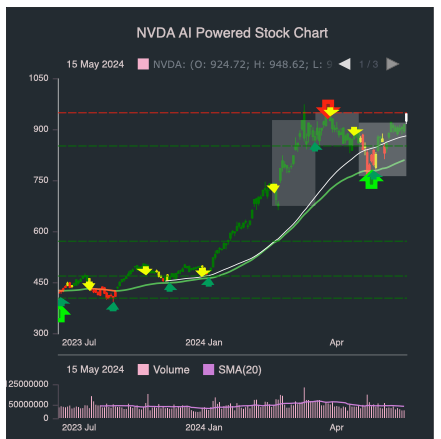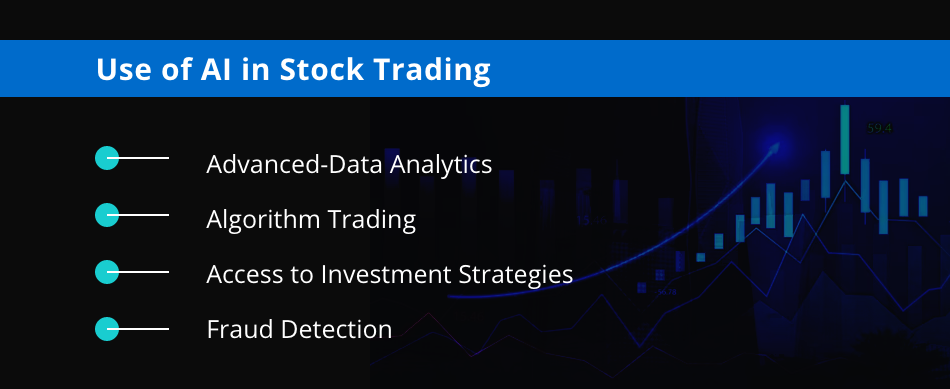When using AI-based trading platforms that predict and analyze prices of stocks, privacy and security are crucial. These platforms usually handle sensitive personal and financial data. Data breaches or mishandling could lead to financial and reputational losses. Here are 10 suggestions on how to evaluate the security and privacy features of these platforms.
1. Evaluation of Data Security
Security during transport: Make sure that your platform is using secure protocols, such as SSL/TLS to secure any data exchanged between the servers on your device and the server of the other.
Secure at Rest: Ensure that any sensitive information stored on the platform's servers is encrypted using strong encryption standards (e.g., AES-256).
Check whether the platform supports end-to-end encryption of sensitive information or communications.
2. Review the Authentication Mechanisms
Two-factor authentication (copyright) Check if the platform supports copyright in order to add an extra layer of security.
Biometric authentication - Look to see if there's biometric options to use for mobile app login (e.g. finger print or facial recognition).
Password policies: Find out whether the platform follows strict policies regarding passwords (e.g. minimum length or requirements for complexity).
3. Verify Compliance
Financial regulations: Ensure the platform is compliant with pertinent financial regulations (e.g., SEC, FINRA, MiFID II).
Law on data protection: If your business is with or are located in an area that is subject to these laws, ensure the compliance.
Audit certifications: Verify if your platform has been examined by a third-party auditor or certifications.
Review Controls for Accessing Data
Role-based Access: Ensure that your platform uses role-based controls (RBAC) in order to limit access to data to authorized users.
Permission levels - Make sure that you can assign different permissions to users or members.
Activity monitoring: Check whether the platform records and monitors user activity for suspicious behavior.
5. Assess the vulnerability of your organization.
Regular updates: The platform should periodically update its software to fix vulnerabilities.
Penetration testing: Check to determine if the platform has been subjected to regular penetration tests to help it discover and rectify security flaws.
Find bug bounty programs. They're designed to motivate external security researchers (such such as Google) to report vulnerabilities.
6. Evaluate Data Privacy Policies
Transparency: Go through the privacy policies on the platform to understand how your data is collected, used, and shared.
Data minimization: Ensure the platform only collects data necessary for its functionality.
Third-party sharing: Check if the platform shares its data with third-parties and, if so, under what terms.
7. Secure API Use is Checked
API security: Make sure that the platform's API utilizes secure authentication (e.g. OAuth, API Keys) and encrypts every data exchange.
Rate limitation - Make sure that the API is equipped with rate limitations to prevent abuses or attacks using brute force.
Examine the access logs to see if they are being monitored and audited for compliance.
8. Review the Reaction to an Incident and Recovery
Incident response plan - Make sure that the platform is equipped with a strategy to deal with data breaches and other security incidents.
Check the notification policy of the platform. Does it notify users immediately if there is an incident?
Data backups: Check that the platform is backed up with its data frequently and has an emergency recovery plan.
9. Review the security measures for physical security
Security of the data center Check that the servers of your platform are in data centers that have physical security measures, such as security and access controls.
Redundancy: Verify if the platform has redundant systems in order to guarantee that data is available in the event an hardware failure.
Check the geographic distribution of the data to ensure its resilience.
10. Test privacy controls on users
Data deletion - Make sure that you erase your personal data completely from the website, if you decide to stop using its services.
Privacy settings: Make sure that you have privacy settings that let you control the data shared and visible.
Anonymization: Determine if your data is encrypted to allow machine learning or analytics.
Bonus Tips:
Feedback from users and reputation: Review feedback and reviews from users to assess the reputation of the platform in terms of privacy and security.
Free trial period: Test the privacy controls of the platform and security features by using a demonstration.
Customer support: Make sure that the platform offers a robust customer support for any security-related issues or concerns.
These guidelines will allow you evaluate the security and privacy of AI trading platforms that forecast or analyze price of stocks. Your personal information and financial information will be secure. Secure platforms will not only safeguard your assets, but it will also increase confidence and trust in its products. Follow the most popular ai for investment examples for website info including investing ai, ai investing, ai trading, best ai stock, ai investing app, ai for investment, ai investing platform, ai chart analysis, trading ai, ai investment app and more.

Top 10 Tips On Assessing The Transparency Of Ai Stock Predicting/Analyzing Trading Platforms
Transparency should be considered when considering AI platforms for prediction and trading in stocks. Transparency is crucial because it allows users to be confident in the platform, comprehend the choices made, and check the accuracy. These are the top 10 methods to assess the degree of transparency that these platforms offer.
1. Clear Explanation of AI Models
Tip: Check if the platform provides an explanation of the AI algorithms and models used to predict.
What's the reason? By understanding the technology, users can evaluate its reliability and drawbacks.
2. Sources of Disclosure for Data
Tip : Determine whether the platform is transparent about which data sources are utilized (e.g. historical stock data, news or social media).
The platform uses reliable and complete data if you know the sources.
3. Backtesting and Performance Metrics
TIP: Always seek out transparent reports on performance metrics such as accuracy rates and ROI, as well testing results back to back.
This will enable users to evaluate the efficacy of the platform and also its past performance.
4. Real-time updates and Notifications
Tips: Check if the platform provides real-time updates and notifications about trading, predictions or system updates.
What is the reason? Real-time visibility assures that users are always alert to critical actions.
5. Transparent Communication Concerning Limitations
Tip - Check to see whether the platform is honest about the risks associated with its prediction and trading strategies.
Why: Acknowledging limits builds confidence and allows you to make better decisions.
6. Data in Raw Data to Users
Tip: Make sure users are able to access raw data used in AI models, or the intermediate results.
Why? Because the raw data is available to users for their own analysis.
7. Transparency in Costs and Fees
Make sure the platform clearly lists all fees for subscriptions and any hidden charges.
Reason: Transparent pricing helps avoid unanticipated costs and increases trust.
8. Regular Reporting and Audits
Tips: Make sure the platform regularly releases reports or undergoes third-party audits to confirm its operations and performance.
The benefits of independent verification are that it increases credibility and accountability
9. Explainability and Predictions
Tips: Check if the platform explains the specific ways in which recommendations or predictions are created (e.g. the importance of features, decision trees).
Why? Explainability lets users to learn the reasoning behind AI-driven actions.
10. Customer Feedback and Support Channels
Tip: Evaluate if the platform has an open channel for user feedback and support, and whether it is able to respond in a transparent manner to user concerns.
The reason is that responsive communication indicates the commitment to transparency as well as user satisfaction.
Bonus Tip: Regulatory Compliance
Check that the platform meets all financial requirements. It should also announce its compliance status. It adds an additional layer of credibility and transparency.
If you take the time to carefully examine these factors, it is possible to assess whether an AI-based stock forecasting and trading system functions in a transparent way. This allows you to make informed choices and gain confidence in the capabilities of AI. Check out the top rated stock trading ai tips for more info including stocks ai, can ai predict stock market, ai trading tool, ai in stock market, ai options trading, best ai penny stocks, ai in stock market, ai copyright signals, best ai stock prediction, ai software stocks and more.
